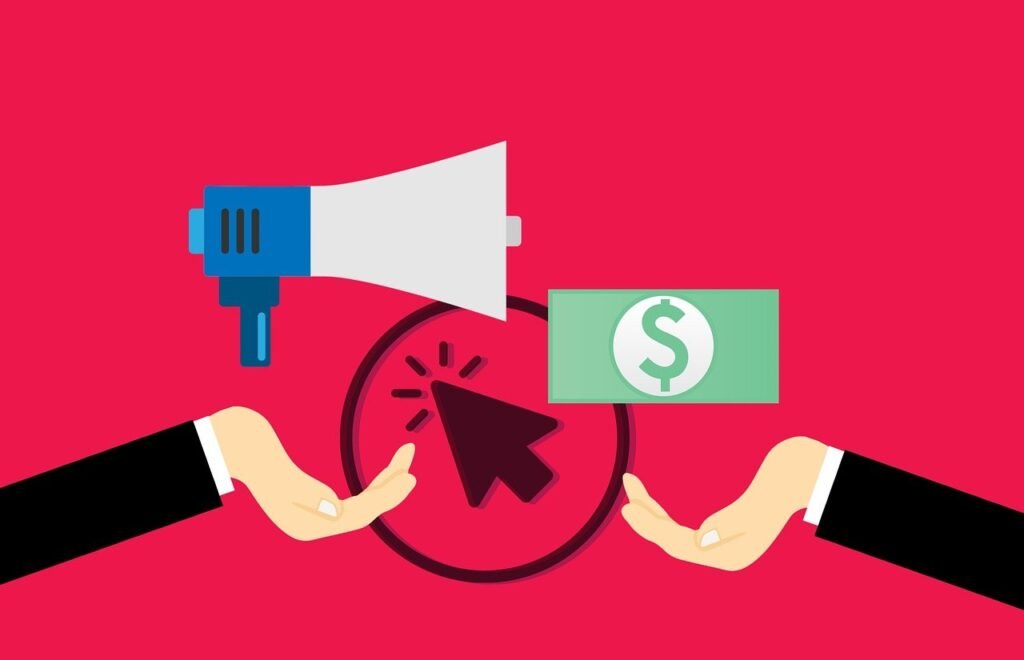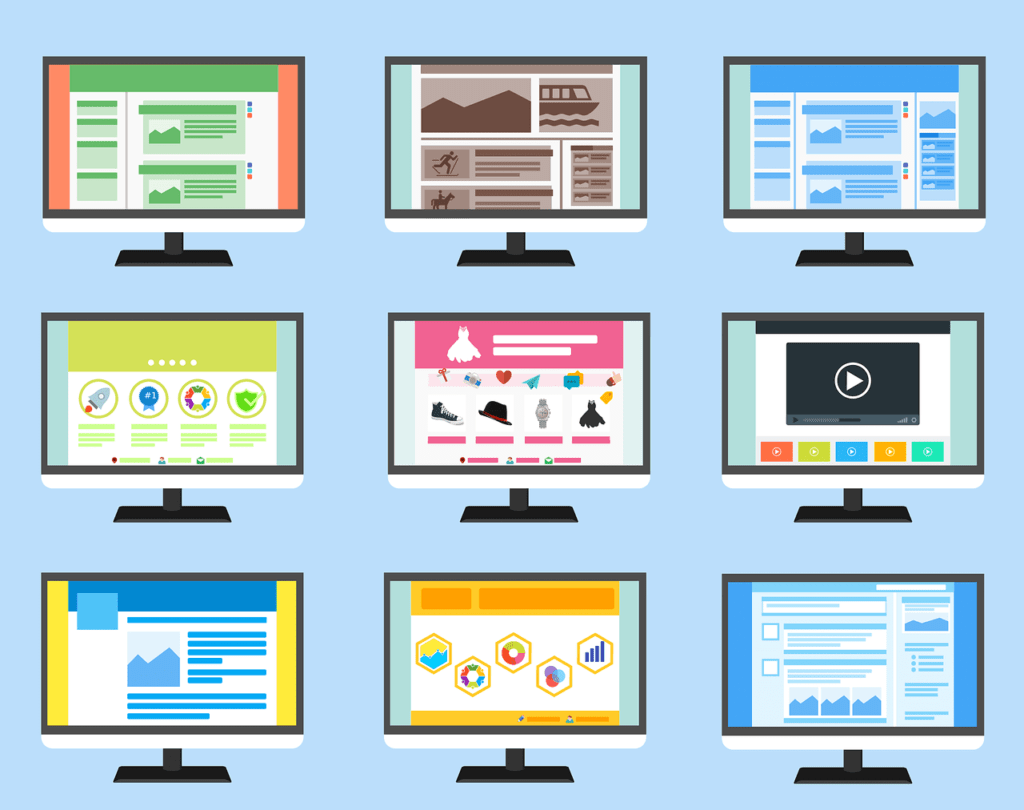Introduction to Call-to-Action Strategies
In today’s digital era, small business websites serve as vital platforms for connecting with potential customers. However, the journey from attracting visitors to converting them into loyal customers is complex and multifaceted. At the core of this journey lies a crucial element – the Call-to-Action (CTA). This article aims to explore the world of CTAs, offering insight into their importance, design, and implementation to effectively transform website visits into tangible business results.
CTAs are more than just buttons on a webpage; they are the culmination of your website’s narrative, guiding your visitors towards a specific action, be it making a purchase, signing up for a newsletter, or downloading a resource. The effectiveness of these CTAs can significantly impact the success of your online presence. In this guide, we will walk you through various strategies to craft compelling CTAs that resonate with your audience and bolster your small business’s online effectiveness.
Get rock-solid web hosting with Hostinger! Enjoy 70% off, blazing speeds, and the reliability you need. Use our referral link to get your deal!
Understanding Your Audience
Who Are They? Before you can encourage action, you must first understand who you are speaking to. Knowing your audience is the foundation of any successful marketing strategy, especially in the realm of CTAs. This involves diving into demographics, interests, pain points, and online behaviors of your target market.
Tailoring Your Approach Different audiences respond to different triggers. A CTA that works for a tech-savvy teenager might not resonate with a retiree. By understanding your audience, you can tailor your CTAs to speak directly to their needs and desires, significantly boosting the likelihood of engagement.
The Psychology Behind Effective CTAs
The human mind responds to certain triggers, and understanding these psychological underpinnings can greatly enhance the effectiveness of your CTAs. Let’s explore some key psychological factors:
Urgency and Scarcity People are wired to respond to urgency and scarcity. Phrases like “Limited offer” or “While stocks last” create a sense of urgency, prompting quicker decision-making.
Fear of Missing Out (FOMO) Leveraging FOMO can be a powerful motivator. By implying that an opportunity is in high demand or time-sensitive, you can encourage users to act promptly to avoid missing out.
Value Proposition Your CTA should clearly articulate the value it brings to the user. What will they gain by clicking? Whether it’s a solution to a problem or a step towards achieving a goal, make the benefit clear.
Designing Your CTA for Maximum Impact
The design of your CTA plays a pivotal role in its effectiveness. Here are some design elements to consider:
Color The color of your CTA button should stand out from the rest of the page but still align with your overall design aesthetic. Contrasting colors can draw attention without clashing with the website’s color scheme.
Size and Shape The size of your CTA button should be large enough to be noticed but not so large that it overwhelms other content. The shape should also be simple and familiar, like a rectangle or oval.
Table: Effective CTA Design Elements
| Element | Tips |
|---|---|
| Color | Use contrasting colors for visibility |
| Size | Big enough to notice, but not overwhelming |
| Shape | Stick to simple, familiar shapes |
| Positioning | Place it where users naturally look |
| Copy | Clear, concise, action-oriented language |
Positioning Your CTA: Where and When
The positioning of your CTA is crucial. It should be placed in an area where users naturally focus their attention. Common practices include placing CTAs above the fold (the part of the webpage visible without scrolling), at the end of compelling content, or even interspersed within the content if it aligns naturally with the user’s reading flow.
Crafting Compelling CTA Copy
The words you choose for your CTA can determine its success. Here are some tips for writing effective CTA copy:
Action-Oriented Language: Use verbs that prompt action, such as “Discover,” “Start,” “Join,” or “Learn.” This encourages users to take the next step.
Clarity and Conciseness: Your CTA should be clear and to the point. Users should understand what they’re expected to do and what they’ll receive in return.
Personalization: Whenever possible, personalize the CTA. Phrases like “Start Your Journey” or “Get Your Guide” can make users feel more connected to the action.
Using Urgency and Scarcity in CTAs
Creating a sense of urgency and scarcity can be highly effective. Here are some strategies:
Time-Limited Offers: Indicating that an offer is available for a limited time can encourage users to act quickly.
Limited Availability: Highlighting the limited nature of an offer (“Only a few spots left!”) can spur action.
Countdown Timers: Visual countdowns can add to the sense of urgency, reminding users that time is running out to take advantage of an offer.
Testing and Optimizing Your CTAs
No CTA is perfect from the start. Continuous testing and optimization are key. Consider these methods:
A/B Testing: Regularly test different versions of your CTAs to see which performs better. Change one element at a time, such as color, wording, or placement, to determine what influences user behavior.
Analytics: Use web analytics to track the performance of your CTAs. Look at click-through rates, conversion rates, and bounce rates to gauge effectiveness.
Integrating CTAs with Overall Marketing Strategy
Your CTAs should align with your overall marketing strategy. This involves:
Consistent Messaging: Ensure that the message in your CTA aligns with your broader marketing messages.
Multiple Channels: Incorporate your CTAs across various platforms, including email, social media, and other marketing materials, to reinforce the message.
Brand Alignment: Your CTAs should reflect your brand’s voice and style, maintaining consistency and building brand recognition.
Leveraging Social Proof in CTAs
Incorporating social proof, like testimonials or user statistics, can enhance the credibility of your CTAs. For example, “Join 10,000+ happy customers” can be a powerful motivator.
Mobile Optimization for CTAs
With the increasing prevalence of mobile browsing, ensuring your CTAs are optimized for mobile devices is crucial. This means considering factors like button size, page load times, and the mobile user experience.
The Role of Color and Typography in CTAs
Color and typography can influence user perception and behavior. For example, red can convey urgency, while blue can instill trust. Similarly, clear, easy-to-read fonts are essential for readability and user engagement.
Avoiding Common CTA Pitfalls
Awareness of common mistakes can help you avoid them. This includes using too many CTAs on a page, creating confusing or vague CTAs, and neglecting to test and optimize.
Creating a Seamless User Journey with CTAs
Your CTAs should fit naturally into the user’s journey on your site. This means understanding the user’s mindset at different stages and placing CTAs where they are most relevant and effective.
Innovative CTA Trends and Technologies
Staying abreast of the latest trends and technologies can give you an edge. This might include exploring interactive CTAs, animated buttons, or AI-driven personalization techniques.
The Impact of Personalization on CTAs
Personalizing CTAs based on user behavior and preferences can significantly boost their effectiveness. Techniques can range from using a user’s name to customizing offers based on browsing history.
Measuring CTA Performance: Key Metrics
To assess the success of your CTAs, it’s essential to track specific metrics. Key performance indicators include:
- Click-Through Rate (CTR): This measures the percentage of users who click on the CTA. A higher CTR indicates a more effective CTA.
- Conversion Rate: This tracks how many users who clicked on the CTA completed the desired action, such as making a purchase or signing up.
- Bounce Rate: A high bounce rate on pages with CTAs might indicate that the CTA is not resonating with your audience or is not clearly defined.
Legal Considerations in CTA Design
While designing CTAs, it’s vital to be mindful of legal considerations, especially concerning privacy laws and advertising regulations. This includes being transparent about what the user is signing up for and ensuring that any data collection complies with data protection laws like GDPR or CCPA.
Expert Insights on CTA Best Practices
Gaining insights from marketing experts and CTA specialists can be invaluable. This part of the article would delve into expert opinions and best practices, offering a diverse range of perspectives and tips for creating effective CTAs.
Effective CTA Strategies for Different Industries
CTAs are not one-size-fits-all. Different industries may require different approaches. This section would explore industry-specific CTA strategies, providing insights into how businesses in various sectors can tailor their CTAs for maximum impact.
Enhancing CTAs with Visual Elements
Visual elements such as images, icons, and videos can greatly enhance the appeal of your CTAs. This section discusses how to effectively use these elements to attract attention and convey your message more effectively.
The Future of CTAs in Digital Marketing
Looking ahead, this part of the article would speculate on the evolving role of CTAs in digital marketing. It could cover emerging trends, potential new technologies, and how CTAs might adapt to changing user behaviors and preferences.
Building Trust Through CTAs
Trust is a key factor in convincing users to take action. This section focuses on how to use CTAs to build and reinforce trust with your audience, ensuring they feel confident in engaging with your business.
Conclusion: Elevating Your Business with Effective CTAs
In conclusion, effective Call-to-Action strategies are pivotal for small business websites. They are not just about getting clicks; they are about creating a journey for your users that leads to your business goals. By understanding your audience, leveraging psychological principles, focusing on design, copy, and positioning, and continuously testing and optimizing, you can create CTAs that not only attract attention but inspire action. Implementing these strategies can transform your website’s performance, driving significant results for your business and elevating your online presence.
FAQs
- How important is CTA placement on a website? Placement is critical as it can greatly influence the visibility and effectiveness of the CTA. It should align with the natural browsing behavior of the user.
- What are some common mistakes in designing CTAs? Common mistakes include using vague language, choosing colors or fonts that don’t stand out, and not aligning the CTA with the overall marketing strategy.
- Can CTAs be personalized for different user segments? Yes, personalization can significantly increase the effectiveness of CTAs. Using data about user preferences and behaviors can help tailor the CTA to different segments.
- How often should I test and optimize my CTAs? Continuous testing is key. Regularly conduct A/B tests and analyze performance metrics to optimize your CTAs.
- What role does color play in CTA effectiveness? Color can influence emotions and behaviors. Choosing the right color for your CTA can attract attention and convey the right message.
- How can I measure the success of my CTAs? Measure success through metrics like click-through rates, conversion rates, and the impact on overall business goals.









